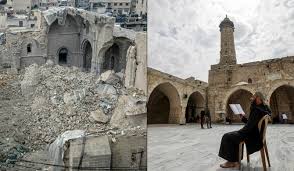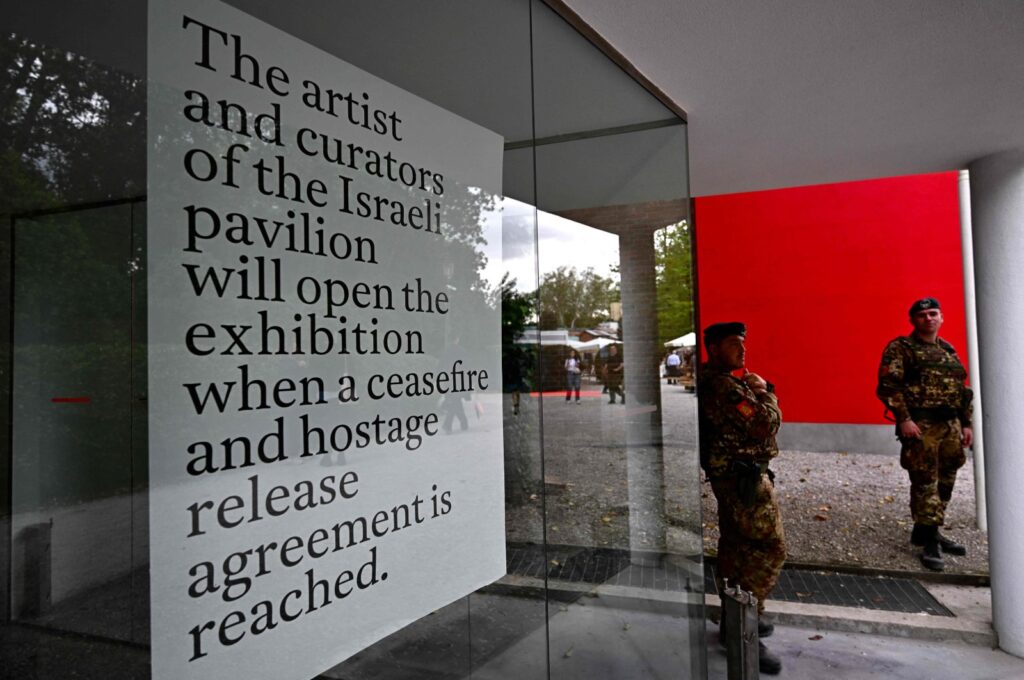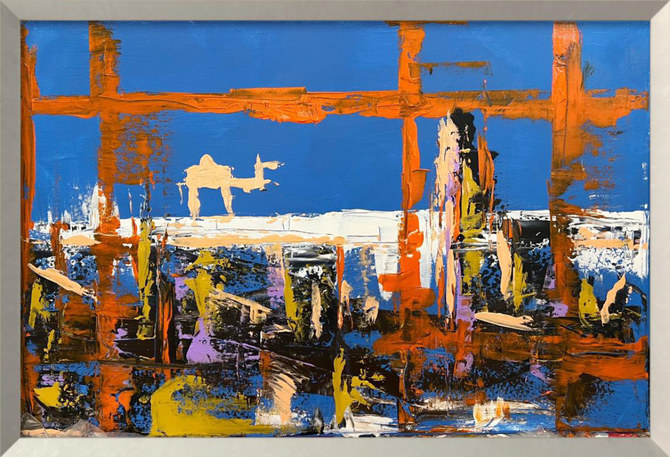
ADIYAMAN, Türkiye (DPA): Held under the theme of ‘An Imaginary Civilization’ for the first time, the Commagene Biennial is presenting a total of 53 artworks by artists from 23 countries in six landmarks of southeastern Adıyaman province as a tribute to the ancient kingdom, which proved peaceful coexistence is possible
On Türkiye’s majestic Mount Nemrut at a height of 2,200 meters (7,350 feet) in southeastern Adıyaman province, a bunch of visitors wrapped in blankets enjoyed the spellbinding view of the sunrise.
It’s the same ritual many more, elderly and children alike, will repeat later for sunset, after climbing up a treacherously steep 800-meter route along a cliff.
This year, the UNESCO World Heritage Site’s terrace, home to the royal mausoleum of Greek-Persian King Antiochus I (69-34 B.C.), the first ruler of the ancient kingdom of Commagene, has an unusual guest.

Facing a 50-meter-tall burial mound that features giant busts of kings and ancient gods, a contemporary sculpture of King Antiochus VI has appeared.
The sculpture, symbolizing an “imaginary” ruler, was recently placed at the site as part of the first-ever Commagene Biennial, an art show celebrating the legacy of the kingdom in and around the southeastern province of Adıyaman, modern Türkiye.
On a nearby hill stands Arsameia, a sanctuary built by Antiochus I in honor of his father Mithridates. It’s home to a massive stele that depicts Antiochus shaking hands with Heracles, a reference to reconciliation between East and West.
Mithridates, a Hellenistic king, had married Syrian Princess Laodice VII Thea, which historians believe served as a peace treaty.
Spanning from the east of the Taurus mountains along modern Türkiye’s Syrian border to the Upper Euphrates, Commagene lay in what many call the cradle of ancient civilizations.
Several important kings and empires preceded it, from the Hittites and Persians to Alexander the Great, and it later became part of the Roman Empire.

Antiochus’ ceremonial and burial mound on Nemrut had lain forgotten for centuries until it was discovered by German archaeologists in the 19th century.
Excavations have been ongoing since the 1950s, yet have failed to uncover the king’s burial chamber so far.
This year’s biennial features a total of 53 artworks by artists from 23 countries, with nods to ancient rituals, gods and traditions and even local food culture.
The event is a tribute to Commagene’s peaceful, cross-cultural identity, explains Nihat Özdal, the curator of the event.
“The Commagene kingdom lasted only for 200 years but lived in peace. We think that is its most important legacy for us after two millennia,” Özdal told Deutsche Presse-Agentur (dpa).
The event aims at creating a fictional civilization to help people imagine what a contemporary Commagene kingdom would look like, he said.
A gastronomy and culinary arts display is separately planned at Mount Nemrut by popular Turkish chef Hazer Amani.
The exhibit will offer a menu from scratch, blending ancient recipes with local products and modern cuisine, Amani told dpa.

Other artworks on display also imitate ancient handicraft methods.
For instance, the creator of the Antiochus VI sculpture carried its parts on his back to the top of the hill. He then reassembled them in the same way the ancient artifacts were once raised.
In Adıyaman, a permanent workshop is planned to be built for artists from around the world to further reflect on the inspiration the region provides for people, curator Özdal said.
“Modern man is weary of lingering chaos, violence and wars. Our goal is to reflect more deeply on the concept of a peaceful society that served as a bridge between East and the West,” Özdal said.
The Commagene Biennial runs until the end of October.
The post Commagene Biennial greets peaceful coexistence of ancient kingdom appeared first on The Frontier Post.








